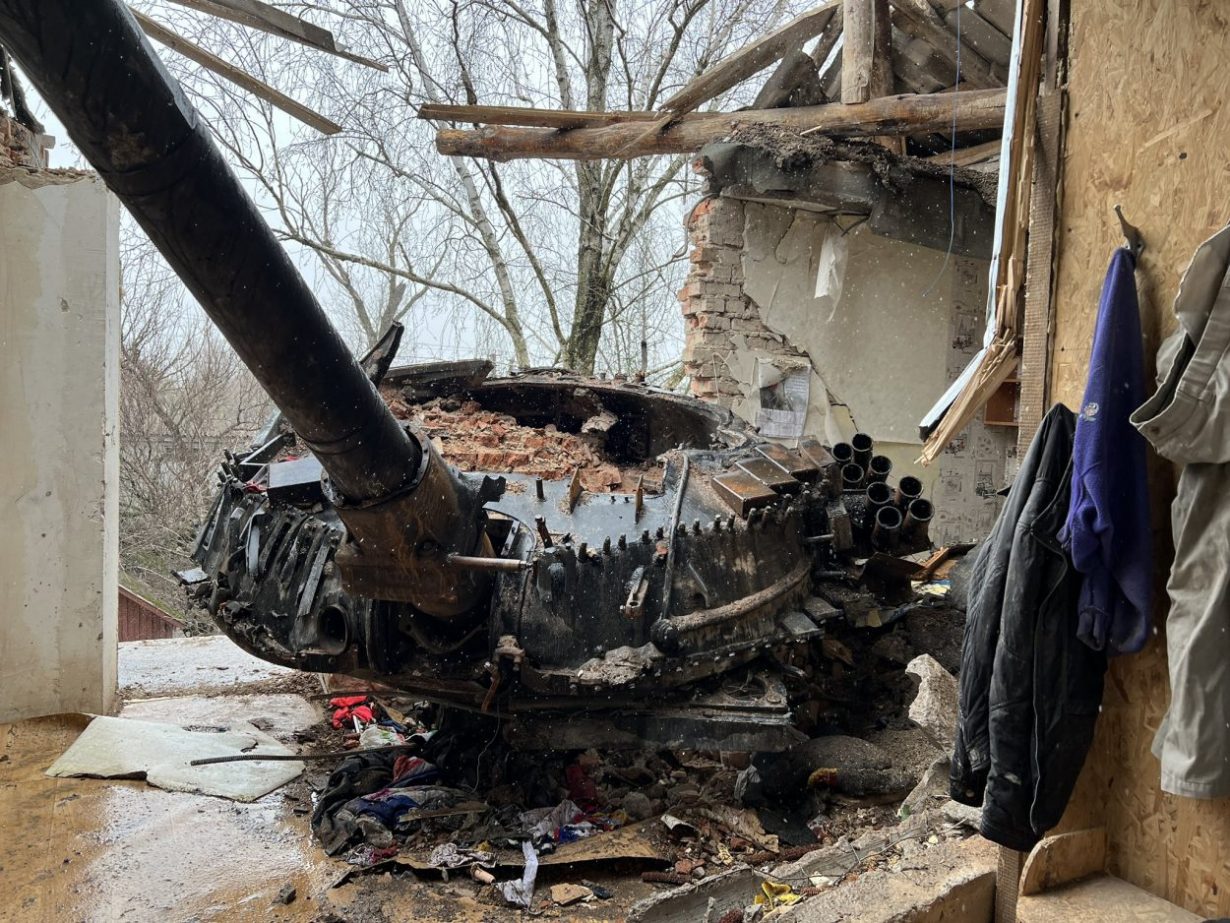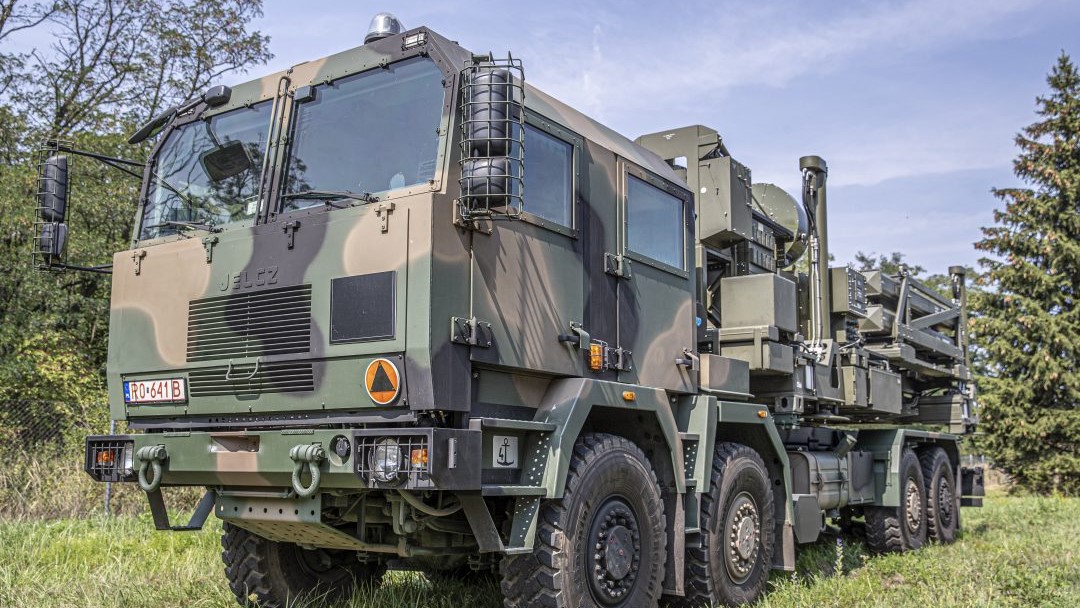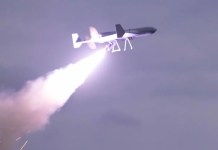The British subsidiary of the pan-European missile systems company MBDA has agreed with the Polish military to provide its Brimstone missiles for a new fleet of tank-busting vehicles being developed by a local industrial consortium led by Polish Armaments Group (PGZ).
“Bang On Target” – Ukrainian Soldier Films A Russian Rocket Hitting His Trench Where He Was Hiding
According to Russian state media, the deal comes just days after Oleg Morozov, a Russian lawmaker, threatened to ‘denazify’ Poland after Ukraine.
The Brimstone anti-tank missiles will be integrated with the Polish vehicle program known as the Ottokar Brzoza, replacing the Soviet-era wheeled BRDM-2 currently in service.
The announcement came the same day as the PGZ named industrial consortium members who would design and produce the new vehicle.

Polish munitions company MESKO, part of the PGZ-led consortium, already makes components for the Brimstone weapon. The British have been competing with rival international weapons suppliers for the key part of the weapon system for several years.
Brimstone Used By Ukraine Against Russian Forces
Of late, the Brimstone has been in the news after it emerged that Ukrainian armed forces have been using the British-supplied missile to destroy the Russian armored vehicles.
With Power Of Gripens, Sweden Can Deploy A Whopping 1000 Fighter Jets To Help Ukraine Against Russia?
Drone footage appeared on May 18, shared by Pavlo Kashchuk, a Ukrainian combat instructor, showing two Brimstone missiles striking Russian military vehicles in quick succession, sending debris flying into the air.
The two missiles were fired from a tractor before striking a convoy of military vehicles reportedly in the Donbas region.
First footage of British supplied #Brimstone missiles used against #Russian forces in the east. The video shows the successful firing of two tanks. pic.twitter.com/vhVx3slk2X
— NEXTA (@nexta_tv) May 18, 2022
“There are already rumors about new ghost planes from NATO, but wait, it’s just good old Brimstones in the skillful hands of operators of the Special Operations Forces and a little bit of military trickery,” wrote Pavlo.
Evidence of Brimstone being used in Ukraine started appearing in early May, as images showing remains of exploded Brimstone missiles began doing the rounds on social media.
“Waiting To Pounce” — Why A Chinese ‘Special Military Ops’ In Taiwan May Be Round The Corner With Xi Jinping In Power?
The Brimstone Missile
The Brimstone missile is available in air, ground, and ship-launched versions. It can be used as an anti-ship weapon or for attacking ground targets, or perhaps even both. Regardless of its purpose, each Brimstone is 1.8 meters in length, weighs 50 kg, and has a diameter of 1.8 meters.

The missile is guided by dual active millimetric-wave radar and semi-active laser, which allows it to be used in adverse weather conditions and at night. There is also an inertial navigation system autopilot to get it to the general target area at extended ranges before it begins searching out its target autonomously.
The warhead is a tandem-shaped charge with different delay and proximity fusing modes.
The air-launched version is capable of hitting targets at between 7 and 25 km. While the maximum range of the surface-launched version is unclear, it can be assumed to be lower than the air-launched version as it will not benefit from the aircraft’s speed and altitude.
F-35 Stealth Fighters For India? US Mulls ‘Military Strategy’ To Pull Delhi Away From Russia & Join The Anti-China Alliance
The weapon is in service with the British Royal Air Force (RAF) and the air forces of Germany and Saudi Arabia. Qatar is also set to use the weapon in the future.

Sergey Shoigu
Vehicle Launched Version Of The Brimstone
All the previous customers of Brimstone have only relied on an air-launched version of the missile, making Ukraine the first country to have deployed a vehicle-mounted version in active combat.
The truck-mounted ground-launch mechanism for Brimstone was supposedly developed by the UK specifically for Ukraine in a matter of days.
As per the recorded footage on May 12 of a ground-based Brimstone launch in Ukraine, a streamlined development process was adopted by simply bolting a triple Brimstone launcher rack used on an aircraft onto a truck-mounted frame to enable the delivery to Ukraine in a short time frame.
The UK developed, Ukrainian fielded, Brimstone technical exists and it is certainly something. pic.twitter.com/t7VyvYJ7MW
— OSINTtechnical (@Osinttechnical) May 12, 2022
While, there are concepts for dedicated vehicle-mounted box launchers that have been in the works with MDBA, which may be used for the Polish tank buster vehicles, making it the second country after Ukraine to field a vehicle-launched version of the Brimstone.
PGZ chief executive Sebastian Chwalek said in a statement accompanying the announcement that the deal would strengthen cooperation with British industry.
“In difficult times, it is good to have partners one can rely on. We are strengthening our cooperation with the UK defense industry. Today’s agreement is another step towards establishing production of the latest generation Brimstone missile in the country,” said Sebastian.
This is the second time that MBDA UK and PGZ have made news over a missile cooperation agreement within a month. In April, MBDA UK concluded a separate deal with Warsaw to expedite the delivery of the Common Anti-air Module Missile (CAMMS) and launcher as part of a ground-based anti-air program known as NAREW.

The deal to supply Poland with the new ground-based air defense system was originally signed last year, but the Russian attack on Ukraine changed that and Britain agreed to accelerate delivery of the first two missile systems to later this year, which was initially slated to occur by 2027.
Meanwhile, the British Army has deployed its CAMMS-based anti-air system, known as Sky Sabre, to Poland as a stop-gap to bolster the local air defenses.
- Written by Tanmay Kadam/EurAsian Times Desk
- Contact the author at etdesk@eurasiantimes.com
- Follow EurAsian Times on Google News




